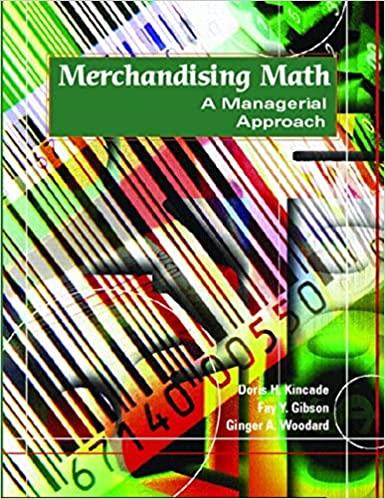Question
Petaluma Chicken, Inc. is considering a new organic chicken farm to service it's western regional stores and has hired you as a consultant to make
Petaluma Chicken, Inc. is considering a new organic chicken farm to service it's western regional stores and has hired you as a consultant to make a recommendation. The stores currently require 500,000 birds per year and they are purchased from various local chicken farms for an average price of $3 per bird. The managers believe that their new organic farm would raise the cost per bird to $4, while raising the average selling price to $8.50 per bird from $6.50 per bird now. However, due to the centralized structure of the is operation, shipping expenses will likely decrease from $1.00 per bird to $0.75. The firm feels it will need to increase its inventory of live birds by $15,000, and it will cost $150,000 to purchase the land, and $300,000 to construct the buildings and purchase equipment. In addition, labor expense is expected to rise by $130,000 per year.
The buildings and equipment will be depreciated using the straight-line method over five years to a salvage value of $100,000. After five years, the company will sell the farm for $300,000 (Base case estimate is $100,000 for the buildings and equipment and $200,000 for the land). The firms tax rate is 35% and be sure you remember that land is not depreciable.
Given that, construct a spread sheet that calculates the initial outlay, after tax cash flows, and terminal cash flow for the project. The companys cost of capital is 11%, find NPV and IRR. Using that, decide if this is a go or no go project. Then do any other analysis you think might be useful to the CEO. When complete, construct a memo that will inform the CEO of your findings and your suggested course of action.
Next week, three different market scenarios will be added. You will learn how to conduct the what-if or scenario analysis in that week.
**NEED SPECIFIC HELP WITH TERMINAL CASH FLOW**
| Cash Flow | ||
| Initial Outlay | $ 465,000.00 | Cost of land, buildings and increase in inventory |
| Annual After-tax Cash Flow | $ 387,750.00 | Turkeys per year times additional profit minus labor + depreciation. |
| Then multiply by 1-tax rate to get after tax net income then add back depreciation as it's not cash | ||
| Terminal Cash Flow | $ 297,500.00 | Sell off land, buildings and inventory while accounting for taxes |
| Land cost | $ 150,000.00 | So actual salvage value building minus any taxes due on the difference of the actual salvage value and the depreciated salvage value. |
| Land Salvage Value | $ 200,000.00 | Plus the actual salvage value on the land minus any taxes due on the difference of the actual salvage value and the land cost |
| Tax | $ 17,500.00 | Plus selling off the increased inventory (sold at same price as bought) |
| Gain on Sale | ||
| Building Salvage Value | $ 100,000.00 | |
| Depreciation Building | ||
| Tax | $ - | |
| Gain on Sale | $ - | |
| Salvage Value Inventory | $ 15,000.00 | |
| Period | Cash Flow | Initial outlay from above |
| 0 | $ (465,000.00) | After tax CF from above |
| 1 | $ 387,750.00 | After tax CF from above |
| 2 | $ 387,750.00 | After tax CF from above |
| 3 | $ 387,750.00 | After tax CF from above |
| 4 | $ 387,750.00 | After tax CF from above |
| 5 | $ 685,250.00 | After tax CF from above plus the terminal cash flow from above |
Step by Step Solution
There are 3 Steps involved in it
Step: 1

Get Instant Access to Expert-Tailored Solutions
See step-by-step solutions with expert insights and AI powered tools for academic success
Step: 2

Step: 3

Ace Your Homework with AI
Get the answers you need in no time with our AI-driven, step-by-step assistance
Get Started


